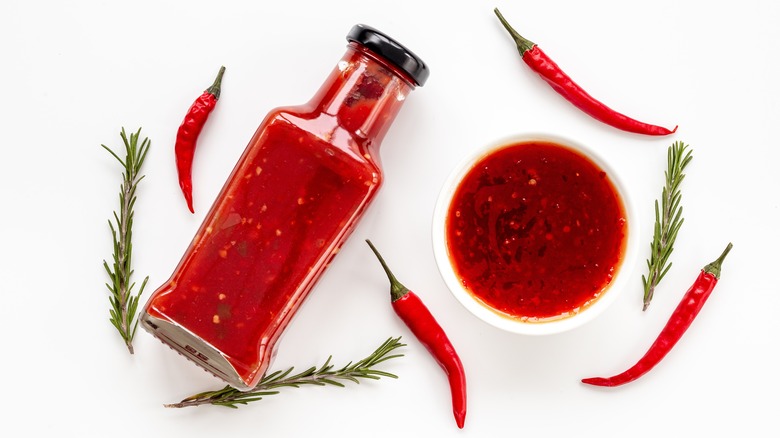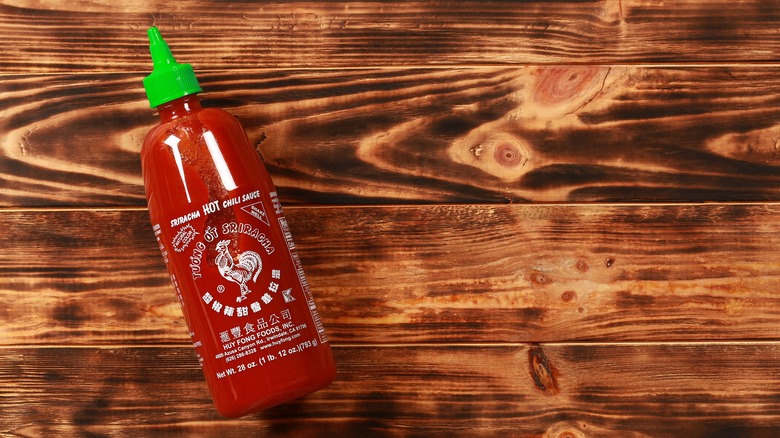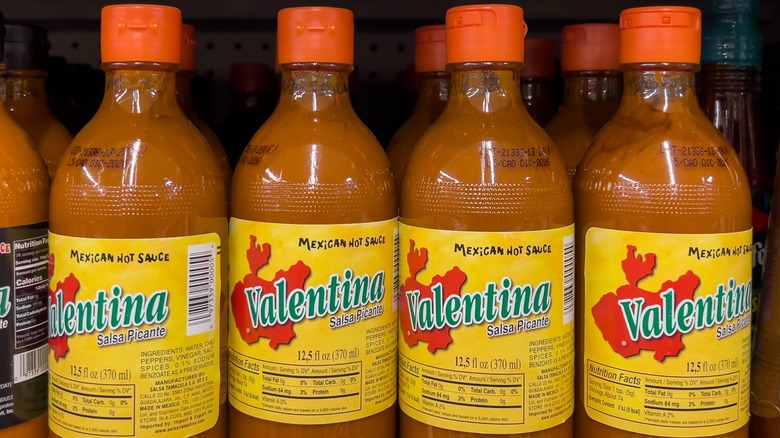What's The Difference Between Fermented And Vinegar-Based Hot Sauce?
Among the condiments sold at your local grocery store, it is unlikely that any has the same staggering number of varieties available for sale as hot sauce. Even if you tend to shy away from spice, you can undoubtedly rattle off the names of varieties you've heard of. The world of spicy sauces goes far beyond the more common pourable varieties and can include thick mashes like sambal oelek, a chili paste from Southeast Asia.
Knowing how to differentiate between the innumerable hot sauce brands on supermarket shelves is essential for those who enjoy a splash of heat with their food. Two of the primary styles are fermented and vinegar-based hot sauces. Put simply, vinegar-based hot sauce is a blended bottle of vinegar and spices, while fermented hot sauce calls for peppers, salt, and water to spend a lengthy stint sealed in a jar, developing funky flavors before being blended.
The full flavor of fermented hot sauce
There are myriad reasons to add more fermented foods to your diet. These foods often contain a slew of healthy gut bacteria, aid digestion, and can reduce inflammation. Fortunately, if you want to access these health benefits, fermented foods are more available now than ever. One great way to access these benefits is through consuming fermented hot sauce, a versatile condiment that can be added to many meals.
This hot sauce style starts as a mash of peppers, salt, and water, which will then sit in a tightly sealed jar. While sitting in the jar, the acidity of the pepper mix will decrease, thanks to lacto-fermentation. Essentially, this process transforms the simple carbs in the peppers into lactic acid.
After the mixture has spent a week or so sitting in a sealed container, the only remaining step is to blend it. A hot sauce prepared in this fashion can have a more subtle flavor profile, with some of the chili's burn mitigated by the fermentation. Furthermore, this sauce style will sometimes develop sour or fruity flavors. Fermented hot sauce includes wildly different brands like Tabasco and Sriracha. Sometimes, the process of fermentation will raise the pH of a sauce to a point where it is no longer shelf-stable. Many of these overly basic condiments will be combined with a measure of vinegar to make them last longer.
The subtle sting of vinegar-based hot sauce
As you can probably guess, vinegar-based hot sauces are made when chiles are blended with vinegar and salt. Vinegar is an excellent ingredient for stabilizing condiments, so before you store your hot sauce, you should attempt to discern its vinegar content to determine whether or not it's a shelf-stable bottle.
Before you pick your bottle, it should be noted that vinegar-based hot sauces are often less complex than their fermented counterparts. Fermentation can reduce the condiment's heat and give it a more nuanced taste. In a vinegar-based sauce, the pepper's spice is experienced in its most concentrated form, which can make for an overwhelming burn and a shallow flavor profile. If the idea of a condiment with a bit of bite to it theoretically tickles your taste buds, then this style of hot sauce is probably the kind you should gravitate toward. Some of the more mainstream vinegar-based bottles include Cholula and Valentina.


